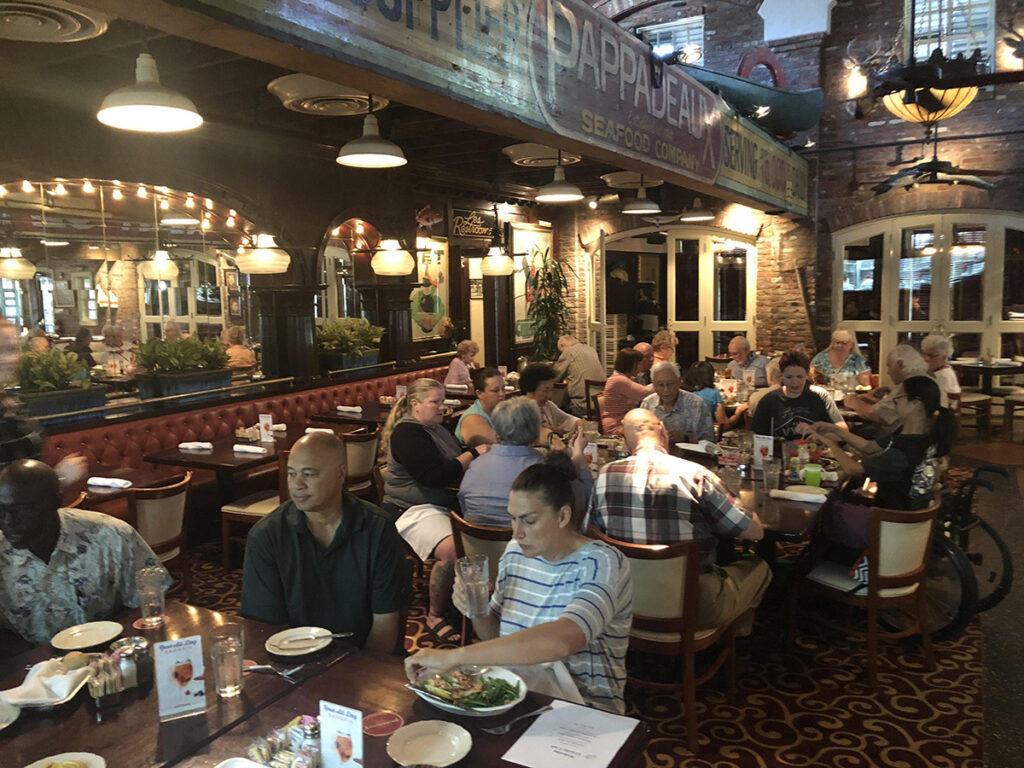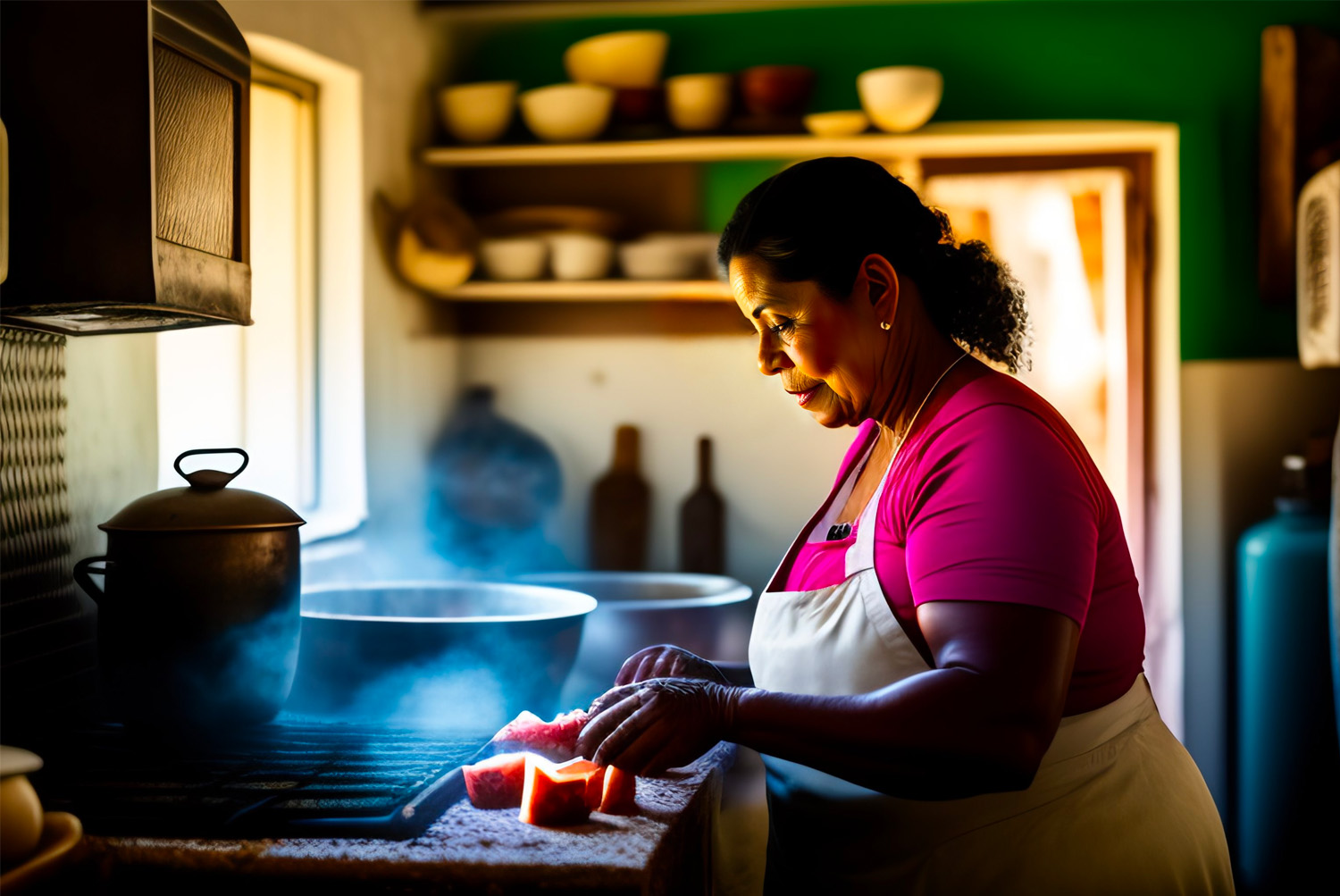The History of Cuban Food: A Culinary Fusion of Cultures
Introduction
Cuban cuisine is a fusion of various cultural influences that have shaped the island’s food habits over centuries. The cuisine of Cuba is an amalgamation of indigenous, African, Spanish, and Caribbean cuisines, making it a unique blend of flavors and spices. In this article, we will explore the history of Cuban food and its influences, from its indigenous roots to its modern-day evolution.
Aborigines Cuisine

The cuisine of Cuba is deeply rooted in its indigenous history, which dates back to the arrival of Christopher Columbus and his sailors in the late 15th century. Columbus and his crew were introduced to a range of native ingredients, including corn, cassava, peanuts, sweet potatoes, squash, chili peppers, and yautía (a species of wild taro). These foods, along with the jutía, a local rodent, and various fruits such as custard apple, soursop, pineapple, star apple, mamey, sugar apple, hicacos, guava, and cashew, among others, became a part of the Cuban diet.
In addition to introducing new ingredients, the indigenous people of Cuba also brought their unique cooking methods and seasonings, which are still prevalent in some regions of the island. Some examples of indigenous dishes that are still popular today include casabe, a type of bread made from cassava, and ajiaco, a hearty stew made with various root vegetables and meats.
African Influences
The arrival of African slaves in Cuba during the colonial era brought a new dimension to the island’s cuisine. African crops such as yam, malanga, plantain, okra, and guinea fowl became part of the Cuban diet, and dishes such as fufú, funche, and tostones (chatinos or punched green plantains; the Colombian patacón) were introduced. The African influence also led to a preference for eating white rice mixed with other foods, fried foods, and sauces.
Spanish Influences
The Spanish colonization of Cuba had a significant impact on the island’s cuisine, with the Spanish cuisine and its regional variations forming the foundation of Cuban cooking. The Spanish brought with them ingredients such as sugar, rice, wheat, beans, potatoes, bananas, mangoes, coffee, garlic, onion, and other foods and seasonings, which were integrated into the Cuban diet. The Spanish Levante, the zone of rice in the culinary regions of that country, also influenced the consumption of rice in Cuba.
In addition to the Spanish influence, there was also an influx of Spaniards from different regions of Spain, which led to the introduction of various regional dishes and cooking styles. The Galician and Asturian cuisines, for example, became popular in the early 20th century, with dishes such as stews and broths made with chickpeas, fabadas, and sausages becoming famous.
Caribbean and Other Influences
The Caribbean and other cultures have also contributed to the evolution of Cuban cuisine. French, English, North American, and Yucatecan cuisines have all left their mark on the island’s food habits. Chinese coolies introduced dishes of Chinese origin, which became popular among the Cuban people. Moreover, during the 20th century, the North American cannery approach and the generalization of Italian cuisine dishes such as pizzas have influenced Cuban cuisine.
1. El Versailles

El Versailles, the most famous Cuban food restaurant in the world, has been serving authentic Cuban cuisine since 1971. Located in Little Havana, Miami, the restaurant is not only a cultural icon but also a gathering place for the Cuban diaspora and a neighborhood hangout for locals and visitors alike. In this article, we will explore what makes El Versailles so special and why it has become a must-visit destination for anyone interested in experiencing the flavors and traditions of Cuban cuisine.
Menu:
The extensive menu at El Versailles features a wide range of traditional Cuban dishes, including croquetas, vaca frita, and Cuban sandwiches. Diners can also choose from a diverse selection of beef, chicken, pork, and seafood entrees, served with classic side dishes such as black beans and rice, moros, and sweet plantains. Traveling visitors can experience a potent dose of sweet Cuban coffee from the restaurant’s old Havana style window. The restaurant’s bakery also serves up delicious Cuban pastelitos (cakes), which are popular with those with a sweet tooth.
Atmosphere:
El Versailles’ atmosphere is as much a part of its charm as its food. The restaurant’s vibrant decor and lively ambiance transport visitors to the heart of Little Havana, with its colorful buildings, street art, and bustling energy. The restaurant is a popular destination for tourists and locals alike, who flock to El Versailles for its authentic Cuban cuisine and friendly service.
History:
El Versailles has a long and storied history, dating back to its founding in 1971. The restaurant quickly became a gathering place for the Cuban community in Little Havana, serving as a hub for social and political activity. Over the years, El Versailles has hosted numerous political figures, including Presidents Ronald Reagan and Barack Obama. The restaurant’s enduring popularity is a testament to its commitment to serving authentic Cuban cuisine and preserving the traditions and flavors of Cuban culture.
Conclusion:
El Versailles is more than just a restaurant; it is a cultural institution, a gathering place for the Cuban diaspora, and a neighborhood hangout for locals and visitors alike. Its extensive menu of traditional Cuban dishes, lively ambiance, and rich history make it a must-visit destination for anyone interested in experiencing the flavors and traditions of Cuban cuisine. From croquetas to pastelitos, El Versailles serves up the very best of Cuban cuisine, transporting visitors to the heart of Little Havana with every bite.
2. Sergio’s

Sergio’s Miami Restaurant is a testament to the fusion of cultures and cuisines that define Miami’s culinary scene. With its unique blend of Cuban and American dishes, warm and inviting atmosphere, and friendly staff, Sergio’s Miami Restaurant has become a must-visit destination for anyone interested in experiencing the best of Miami’s culinary offerings. Whether you’re in the mood for a traditional Cuban dish or an American classic, Sergio’s Miami Restaurant has something for everyone.
3. La Carreta

La Carreta restaurant is a Miami institution that has been serving authentic Cuban cuisine since 1976. As a Cuban family-owned establishment, La Carreta continues to be a staple of the old Cuba’s family dining traditions, serving “abuela-style” food and famously authentic Cuban espresso. In this article, we will explore what makes La Carreta so special and why it has become a beloved destination for locals and tourists alike.
Menu:
La Carreta’s menu features a wide range of traditional Cuban dishes, including ropa vieja, lechon asado, picadillo, and arroz con pollo, as well as a variety of sandwiches and seafood dishes. The restaurant’s authentic Cuban espresso is a must-try, and the bakery section offers a range of sweet treats like flan and tres leches cake. La Carreta also serves up refreshing drinks like mojitos and Cuba Libres.
4. Islas Canarias

If you’re looking for a taste of traditional Cuban cuisine in Miami, look no further than Islas Canarias Restaurant. This family-owned establishment has been serving up classic Cuban dishes since 1977, with a commitment to using the finest ingredients and preserving the family’s original recipes from Cuba. In this article, we’ll take a closer look at what makes Islas Canarias a beloved institution in Miami’s culinary scene.
Menu:
Islas Canarias’ menu features a wide range of traditional Cuban dishes, from ropa vieja and vaca frita to croquetas and empanadas. The restaurant is especially known for its Cuban sandwiches, which are made with freshly baked bread and piled high with roasted pork, ham, and Swiss cheese. Other standout dishes include the lechon asado, the arroz con pollo, and the picadillo.
Atmosphere:
Islas Canarias has a warm and inviting atmosphere, with a casually elegant decor that’s inspired by the European architecture of 1950s Cuba. The restaurant’s friendly staff make everyone feel like family, and regulars are always greeted with a smile and a warm welcome. Whether you’re dining in or taking out, Islas Canarias is a comfortable and welcoming spot to enjoy authentic Cuban cuisine.
History:
Islas Canarias was founded in 1977 by Raul and Amelia Garcia, who passed down their family recipes to their children and grandchildren. Today, the restaurant is run by their daughter Nancy Andrade and her children Eileen and Jonathan Andrade, who continue to preserve the family’s culinary legacy. Over the years, Islas Canarias has become a beloved institution in Miami’s culinary scene, serving generations of locals and tourists alike.
Conclusion:
Islas Canarias is a must-visit destination for anyone seeking traditional Cuban cuisine in Miami. From the Cuban sandwiches to the lechon asado, every dish at Islas Canarias is made with care and a commitment to quality. With its warm and inviting atmosphere and friendly staff, Islas Canarias is the perfect spot for a casual dinner with family or a night out with friends.
5. Doce Provisions

Doce Provisions is a modern Cuban-American restaurant located in the heart of Miami’s Little Havana neighborhood. Established in 2016, the restaurant is co-owned by husband and wife team Justin Sherrer and Lisetty Llampalla, who draw on their Cuban and Southern roots to create a unique fusion of flavors. Doce Provisions’ menu features dishes like braised short rib with yucca hash and avocado crema, Cuban fried chicken with chorizo gravy, and the popular Cubano sandwich. The restaurant has received acclaim from local and national press, including a feature on Food Network’s “Diners, Drive-Ins, and Dives.” With its creative menu and welcoming atmosphere, Doce Provisions is a must-visit destination for anyone seeking innovative Cuban-American cuisine in Miami.
Conclusion
Cuban cuisine is a rich blend of diverse cultural influences, with each culture leaving its mark on the island’s food habits. The indigenous roots, African influences, Spanish colonization, and Caribbean and other cultures have all contributed to the evolution of Cuban cuisine. Today, Cuban food is a fusion of different culinary traditions, resulting in a unique
blend of flavors, spices, and ingredients. The Cuban way of cooking, characterized by natural ingredients and few spices, with a focus on frying, has become a signature of Cuban cuisine.
The history of Cuban food has undergone a significant transformation over the years, with the introduction of new ingredients, cooking methods, and seasonings. From the indigenous roots to the modern-day evolution, the Cuban cuisine has remained a melting pot of cultures, showcasing the island’s rich history and diverse heritage.
Despite being subject to a changing environment, including periods of intense acculturation, foreign influence, and even the impact of the U.S. embargo, Cuban cuisine has retained its unique identity and continues to evolve. The Cuban people have held on to their food heritage and culinary traditions, preserving them for future generations.
Summary
The history of Cuban food is a story of fusion, adaptation, and evolution. It is a reflection of the island’s diverse cultural heritage, with influences from indigenous, African, Spanish, Caribbean, and other cultures. The result is a cuisine that is both unique and delicious, a testament to the creativity and resilience of the Cuban people.

